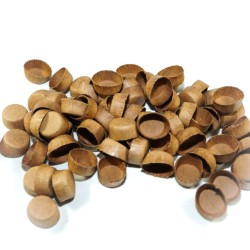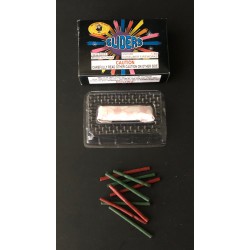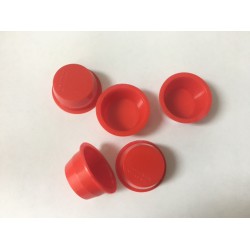
Pyrotechnic Chemical list
Here is a list of Pyrotechnic chemicals and their common uses. If you would like to purchase chemicals please visit WWW.FIRECHEMICAL.COM
Chemical (Synonyms) [Formula]
Description
Aluminum Al
An element used for brilliancy in the fine powder form. It can be purchased as a fine silvery or gray powder. All grades from technical to superpure (99.9%) can be used. The danger is from inhaling the dust and explosive room condition if too much dust goes into the air.
Aluminum Chloride AlCl3
This chemical must not come in contact with the skin as severe burns can result. The yellowish-white crystals or powder have a strong attraction for water. Purchase only in the anhydrous grade.
Amber
This is a fossil resin of vegetable origin and is yellowish-brown in color. It is used in fireworks to a small extent.
Ammonium Bichromate and Dichromate (NH4)2CrO7
A mild poison used in the manufacture of tabletop volcanoes (sometimes called Vesuvius Fire). It is available as orange crystals in a technical grade. Also used in smoke formulas.
Ammonium Chloride NH4Cl
The common name is sal ammoniac. Comes as colorless crystals or a white powder. The technical grade is used to manufacture safety explosives and smokes.
Ammonium Oxalate (NH4)2C2O4.H2O
This compound takes the form of colorless, poisonous, crystals. The technical grade is suitable for the manufacture of safety explosives.
Ammonium Perchlorate NH4ClO4
This chemical can be made to explode by either heat or shock. Besides exploding in itself, it is used to manufacture other explosives.
Ammonium Permanganate NH4MnO4
A moderate explosive which can be detonated by either heat or shock.
Ammonium Picrate NH4C6H3O7
These bright orange crystals are used in armor piercing shells and fireworks. If heated to 300 degrees it will explode or it can be set off by shock. If you do any work with this chemical, it is advisable to keep it wet.
Aniline Dyes
These are used in smoke powder formulas. They are organic coal tar derivatives. Available in many different colors. Also suspected or proven carcinogens....use with caution.
Aniline Green C23H25CIN2
Also known as Malachite Green. One of the many Aniline dyes. The green crystals are used in smoke formulas.
Anthracene
A coal tar derivative used as a source of dyestuff and for colored smokes. Available as colorless crystals which melt at 217 degrees.
Antimony Sb
Another name for this metal element is Antimony Regulus. Purchase the black powder in 99% purity. Not the yellow variety. It is used in pyrotechnics.
Antimony Fulminate
One of a group of unstable, explosive compounds related to Mercury Fulminate.
Antimony Potassium Tartrate
Also known under the name of Tartar Emetic. These poisonous, transparent, odorless crystals (or white powder) are used to make Antimony Fulminate. The moisture that is present can be driven off by heating to 100 degrees. Do not exceed this temperature or the chemical will decompose.
Antimony Sulfide (Sb2S3)
This has usefulness in sharpening the report of firecrackers, salutes, etc. or to add color to a fire. The technical black powder is suitable. Avoid contact with the skin; dermatitis or worse will be the result.
Aqua Regia
A strong acid containing 1 part concentrated Nitric Acid and 3 parts concentrated Hydrochloric Acid. Store in a well closed glass bottle in a dark place. This acid will attack all metals, including gold and platinum. It is used in making some explosives.
Arsenic Sulfide, Red
The common name is Realgar and it is also known as Red Arsenic. Purchase the technical grade, which is available as a poisonous orange-red powder. It is used in fireworks to impart color to the flame.
Arsenic Sulfide,Yellow As2S3
This Chemical is just as poisonous as its red brother and is also used in fireworks, somewhat. The common name is Kings Gold.
Arsenious Oxide As4O6
A white, highly poisonous powder used in fireworks. It is also known as Arsenic Trioxide, Arsenious Oxide and Arsenous Acid. Its uses are similar to Paris Green.
Asphaltum
A black bituminous substance, best described as powdered tar.
Auramine Hydrochloride
Also known as Auramine. It is used in smoke formulas. Available as yellow flakes or powder, which readily dissolves in alcohol.
Auramine
A certified Biological stain used in smoke cartridges.
Barium Carbonate BaCO3
This is a poisonous salt of Barium, which decomposes at a fairly high temperature, 1300 degrees. It is available as a fine white powder in the technical grade. It is used in fireworks as a color imparter.
Barium Chlorate Ba(ClO3)2H2O Available as a white powder. It is poisonous, as are all Barium salts. It is used in fireworks, both as an oxidizer and color imparter. It is as powerful as Potassium Chlorate and should be handled with the same care. Melting point is 414 degrees.
Barium Nitrate Ba(NO3)2
The uses and precautions are the same as above with a comparison equal to Potassium Nitrate instead of the Chlorate. It melts at 500 degrees.
Bismuth Fulminate
One of a group of unstable, explosive compounds derived from Fulminic Acid.
Brass
This is an alloy of Copper and Zinc. Some also contain a small percentage of Tin. The commercial grade is suitable in powdered form. It is used in some fireworks formulas.
Calcium Carbide CaC2
These grayish, irregular lumps are normally packed in waterproof and airtight metal containers. It is used in toy cannons. Mixed with water it forms Acetylene Gas (EXPLOSIVE).
Calcium Carbonate CaCO3
This occurs as the mineral Calcite. It is used for Phosphorous Torpedoes, but does not have any dangerous properties in itself. Also as an acid absorber in fireworks.
Calcium Fluoride CaF2
This finds its use in a smokeless firework mixture and is not used elsewhere. It is a white powder, also known as Fluorspar.
Calcium Phosphide Ca3P2
This compound, which comes as gray lumps, must be kept dry. Upon contact with water it will form the flammable gas, Phosphine (highly toxic!). It is used in signal fires.
Camphor C10H16O
A ketone found in the wood of the Camphor tree, native to Taiwan and a few of our states. For the best results, buy the granulated, technical grade. Used in explosives and fireworks.
Castor Oil
The common drug store variety is used in some powders to reduce the sensitiveness and to waterproof the mixture.
Charcoal C
A form of the element, Carbon, it is used in fireworks and explosives as a reducing agent. It can be purchased as a dust up to a coarse powder. The softwood variety is best and it should be black, not brown.
Chrysoidine
An organic dye available as a red-brown powder. It is used in smoke formulas.
Clay
This can be purchased in the powdered form. It is used dry for chokes, nozzles and sealing firework cases. You can mix it with water to form paste if so desired.
Confectioners Sugar
Commonly called powdered sugar, it can be purchased at your local food store. The fineness is graded by the symbol XXXX. It is used in explosives.
Copper Cu
As any pure metal used in fireworks, this must also be in a powdered state. It is reddish in color, in fact, it is the only element to be found in nature having that color.
Copper Acetoarsenite (Cu)3As2O3Cu(C2H2)2
The popular name for this is Paris Green. It is also called Kings Green or Vienna Green. It is readily available as an insecticide or as a technical grade, poisonous, emerald green powder. It is used in fireworks to add color.
Copper Arsenate CuHAsO3
A fine, light green, poisonous powder. It is used in the technical grade for fireworks.
Copper Carbonate CuCO3.Cu(OH)2
Also known as Cupric Carbonate or Artificial Malachite. It is a green powder used in fireworks.
Copper Chlorate Cu(ClO3)2.6H2O
Or, technically, Cupric Chlorate. A poison used in fireworks as an oxidizer and to add color.
Copper Chloride CuCl2
An oxidizer and color imparter used in fireworks. Purchase the brownish-yellow technical grade. This is a poisonous compound.
Copper Nitrate Cu(NO3)2.3H2O
Or Cupric Nitrate. These blue crystals absorb water, as you can see from the formula. It is used in fireworks.
Copper Oxide CuO
When ordering be sure to specify the black powder. It is also available in red. The technical grade will serve the purpose for fireworks.
Copper Oxychloride
A green powder used to impart oxygen and color especially to blue star formulas. It is a poison and the dust should not be inhaled.
Copper Sulfate CuSO4.5H2O
Known as Blue Vitriol, this poisonous compound is available as blue crystals or blue powder. It can be purchased in some drugstores. Used in fireworks for blue stars.
Copper Sulfide CuS
As are the other copper salts, this is also used in fireworks to add color. The technical grade is suitable and is black in color. You can make your own by passing Hydrogen Sulfide into a Copper salt.
Decaborane B10H14
This chemical is classed as a flammable solid and is used for rocket fuels. It will remain stable indefinitely at room temperature.
Dextrin
This can be purchased as a white or yellow powder. It is a good cheap glue for binding cases and stars in fireworks.
Diazoacetic Ester C4H6N2O2
A very severe explosive in the form of a yellow oil. It will explode on contact with Sulfuric acid or when heated. Very volatile and explosive.
Diazoaminobenzene C6H5N:N.NH.C5
These golden yellow crystals will explode when heated to 150 degrees.
P-Diazobenzeneslfonic Acid C6H4NSO3N
Another severe explosive. It can be exploded by rubbing the white paste or powder, or by heating.
Diazodinitrophenol HOC6H3(NO2)2N(:N)
An organic explosive in the same group as the above compound. Also very sensitive to shock or heat.
Diazomethane CH2
Also known as Azimethylene. This yellow gas is also in the above group and can be exploded by heat or shock.
Dinitrotoulene
Known as DNT for short. These yellow crystals are used in the manufacture of other explosives.
Ethyl Alcohol
This alcohol is the only one that is useful for fireworks. It should be about 95% pure. It is poisonous because of the impurities. It is clear, like water, and also a very flammable liquid.
Fluorine Perchlorate FClO4
A very sensitive colorless gas which will explode on the slightest contact with a rough surface. It can also be detonated by heating to 168 degrees. Avoid all contact with this gas, as even a trace of it will attack the lungs.
Gallic Acid C7H6O5.H2O
A white or pale fawn colored powder used in fireworks to make whistles. When mixed with some chlorates, Permanganates or Silver salts, it may explode.
Glycerol C3H8O3
Commonly known as Glycerin. It is obtained from oils and fats as a by-product when making soaps. It is a sweet warm tasting syrupy liquid which is used in several explosives. Contact with Chromium Trionide or potassium Permanganate may cause an explosion.
Gold Explosive
A dark brown powder which explodes when heated or rubbed. Upon exploding, it yields Gold, Nitrogen and Ammonia. The exact composition is unknown because it is too explosive to be dried.
Guanidine Nitrate CH5N3.HNO3
Guanidine is found in turnip juice, rice hulls and earthworms. It is used in the preparation of this chemical, or, it can be made from Ammonium Nitrate and Dicyanodiamide. To be of any value, it should be 95% pure. Guanidine Nitrate is not explosive itself, but is used in the manufacture of explosives. It is a white powder which melts at 210 degrees.
Gum Arabic
A dried, gummy, exudate from tropical trees. It is available as flakes, fragments and powder. It is used as a binder in firework formulas.
Hexachlorethane CCl3.CCl3
Also known as Carbon Hexachloride, this chemical is used in smoke formulas It can be obtained in either powder or crystals. Treat as toxic.
Indigo
A dark blue crystalline powder which is a commercial dye. You can purchase either the technical or pure grade for smokes.
Iodine I
Heavy grayish metallic looking crystals or flakes. Poisonous. Purchase the U.S.P. grade. It is being used in making explosives.
Iron Fe
The granular powder (at least 99% pure) is needed for several firework pieces. It is not a dangerous element but will rust very easily, making it useless.
Iron Oxide FeO
These black crystals are used in thermite mixtures. When ordering, it may be listed as Ferrous Oxide. Black.
Kieselguhr
This is a whitish powder used in dynamites. It is a siliceous earth, consisting mainly of diatoms. A good grade will absorb about four times its own weight.
Lactose
Also called milk sugar. This white powder has a sweet taste. The crude grade will work for smoke formulas.
Lampblack
This is another name for the element, carbon. It is a finely powdered black dust, resulting from the burning of crude oils. It is used for special effects in fireworks.
Lead Azide PbN6
This is a poisonous white powder which explodes by heating to 350 degrees or by concussion. The main usage is in primers. It can be made from Sodium Azide and Lead Nitrate.
Lead Bromate Pb(BrO3)2.H2O
Poisonous, colorless crystals. Pure Lead Bromate is not explosive unless it is made from precipitated Lead Acetate with an alkali bromate. Made in this manner, it can be exploded by rubbing or striking.
Lead Chloride PbCl2
It is available as a white crystalline, poisonous powder which melts at 501 degrees. It is used in fireworks.
Lead Dioxide PbO2
Also known as Brown Lead Oxide, this dark brown powder is used as an oxidizer in matches and fireworks. Poisonous.
Lead Nitrate Pb(NO2)2
Available as white or colorless crystals in the technical grade. The uses include matches and explosives. Poisonous.
Lead Oxide Pb3O4
Also known as Red Lead or Lead Tetroxide. A 95% purity is desired for matches. Also poisonous.
Linseed Oil
Available in many forms: Brown, boiled, raw and refined. All are made from the seed of the flax plant. The cheapest form is suitable for fireworks. Purchase from a paint store.
Lithium Chloride LiCl
The technical grade is sometimes used to add color to fireworks compositions. Available as a white powder.
Manganese Dioxide MnO2
Used in pyrotechnic mixtures, matches and match box friction surfaces. Available as a technical grade, black powder. This oxidizer decomposes at 535 degrees.
Magnesium Mg
This metal is used in a powdered state for brilliancy in flares and will even burn vigorously underwater.
Mercuric Chloride HgCl2
A white, poisonous powder. Also known as Corrosive Sublimate. It can be made by subliming Mercuric Sulfate with ordinary table salt and then purified by recrystallization. The U.S.P. grade is used for some firework compositions.
Mercuric Oxide HgO
Available in two forms; red and yellow. Both forms give the same oxidizing effects in fireworks. The technical grade is suitable.. All forms are poisonous.
Mercuric Oxycyanide HgO.Hg(CN)2
In the pure state it is a violent poison which will explode when touched by flame or friction.
Mercuric Thiocyanate Hg(SCN)2 A poisonous, white odorless powder used in the making of Pharaoh"s Serpents. Use the technical grade.
Mercurous Chloride HgCl
Also known as Calomel or Mercuric Monochloride. This white, non- poisonous powder will brighten an otherwise dull colored mixture. Sometimes it is replaced by PVC or Hexachlorobenzene and even Antimony Sulfide, for the same purpose. Note that it is non poisonous only when it is 100% pure. Never confuse this chemical with Mercuric Chloride, which is poisonous in any form.
Mercury Fulminate Hg(ONC)2.«H2O A crystalline compound used in primers, percussion caps, blasting caps and other detonators. Explodes very easily from heat or shock.
Methylene Blue C16H18N3SCl
This dark green powder is used for smokes in the technical grade. Also called Methylthionine Chloride.
Mineral Jelly Also known as Vaseline, Petrolatum or Petroleum Jelly. This acts as a stabilizer in fireworks and explosives.
Naphthalene This is a tar product that you may know better as Moth Flakes. Only the 100% pure form should be used in making smoke powders. The melting point is 100 degrees.
Nitric Acid HNO3
Also known as Aqua Fortis. It is a clear, colorless corrosive liquid, which fumes in moist air. It can react violently with organic matter such as Charcoal, Alcohol or Turpentine and consequently must be handled Very carefully. It is available in three forms: White fuming, Red Fuming and Concentrated (70 to 71%). The latter, with a specific gravity of 1.42, is the proper grade to buy. Whatever grade, avoid contact with the fumes or the liquid. Contact with the skin will cause it to burn and turn yellow. It is used to manufacture many explosives.
Nitroglycerin C3H5N3O9
A liquid with a sweet burning taste, but do not taste it or it will produce a violent headache or acute poisoning. It can be made to explode by rapid heating or percussion. It is used as an explosive and also to make other explosives.
Nitroguanidine H2NC(NH)NHNO2
A yellow solid made by dissolving Fuanidine in concentrated Sulfuric Acid and then diluting with water. Dangerous Explosive.
Nitromethane CH3NO2
An oily, poisonous liquid, which is used as rocket fuel.
Oil of Spike
This is a volatile oil obtained from the leaves of certain trees. Keep this colorless (or pale yellow) liquid well closed and away from light. It is used in some fireworks.
Paraffin
This is a white or transparent wax. It is normally sold in a solid block. You can use it to make the required powder.
Paranitroanaline Red (H2NC6H4)3COH
A dye used in smoke formulas. It dissolves in alcohol and will melt at 139 degrees. It is also known as P-Aminophenyl.
Pentaerythritol Tetranitrate C5H8N4O12
A high explosive known as PRTN. Besides being an explosive itself it is used in a detonating fuse called Primacord.
Perchloryl Fluoride ClFO3
A gas under normal air pressure. When brought in contact with alcohol, explosions have resulted.
Phosphorus P
This element comes in three forms, with three different ways of reacting. They resemble each other in name only. Red Phosphorous is the only suitable form for fireworks and matches. It is a non-poisonous violet-red powder. It will ignite at 260 degrees. When making a formula containing Phosphorous, be sure to work with it in a WET STATE. This is a most dangerous chemical to work with and should be handled only by the most experienced. Oxidizers have been known to detonate violently without warning when mixed with Red Phosphorous.
Phosphorous Pentasulfide
Also known as Phosphoric Sulfide. These light yellow crystals are used in matches.
Phosphorus Trisulfide P2S3
This chemical can catch fire from the moisture that is present in air, therefore the container should be kept tightly capped. The technical grade, purchased as grayish-yellow masses, is used in making matches.
Picric Acid
This is used to bring out and improve the tone of colors in various fireworks. It is also used to make other chemicals that are used in fireworks and explosives. Picric Acid can explode from heat or shock. It is interesting to note what it is called in other countries: Britain - Lyddite; France - Melinite; Japan - Shimose.
Plaster of Paris
This is a white powder, composed mostly of Calcium Sulfate. It is used, by mixing with water, for end plugs in fireworks and also in some formulas.
Potassium K
A soft silvery metal element. It will react vigorously with water and several acids. It is not used directly except for some experiments.
Potassium Chlorate KClO3
This, perhaps, is the most widely used chemical in fireworks. Before it was known, mixtures were never spectacular in performance. It opened the door to what fireworks are today. It is a poisonous, white powder that is used as an oxidizer. Never ram a mixture containing Potassium Chlorate. Do not store mixtures which contain this chemical for any great length of time, as they may explode spontaneously.
Potassium Dichromate K2Cr2O7 Also known as Potassium Bichromate. The commercial grade is used in fireworks and matches. The bright orange crystals are poisonous. Also used in smokes. Carcinogenic.
Potassium Ferrocyanide 4Fe(CN)6.3H2O
Lemon yellow crystals or powder which will decompose at high temperatures. It is used in the manufacture of explosives.
Potassium Nitrate KNO3
Commonly called Saltpeter; this chemical is an oxidizer which decomposes at 400 degrees. It is well known as a component in gunpowder and is also used in other firework pieces. Available as a white powder.
Potassium Perchlorate KClO4
Much more stable than its Chlorate brother, this chemical is a white or slightly pink powder. It can often substitute for Potassium Chlorate to make the formula safer. It will not yield its oxygen as easily, but to make up for this, it gives off more oxygen.
Potassium Picrate C6H2KN3O7
A salt of Picric Acid, this chemical comes in yellow, reddish or greenish crystals. It will explode when struck or heated. It is used in fireworks.
Potassium Thiocyanate
Colorless or white crystals which are used to make the Pharaoh's Serpent. The commercial grade or pure grade is suitable.
n-Propyl Nitrate C3H7NC2
Prepared from Silver Nitrate and n-Propyl Bromide and is used as a jet propellant
Red Gum
Rosin similar to shellac and can often replace it in many firework formulas. Red gum is obtained from the bark of trees.
Rhodamine B
A basic fluorescent organic pigment also known as Rhodamine Red. Available in green or red crystals or powder. It is used in smoke formulas.
Shellac
An organic rosin made from the secretion of insects which live in India. The exact effect it produces in fireworks is not obtainable from other gums. The common mixture of Shellac and Alcohol sold in hardware stores should be avoided. Purchase the powdered variety, which is orange in color.
Silver Fulminate Ag2C2N2O2
A crystalline salt similar to Mercury Fulminate but more sensitive. In fact, too sensitive for commercial blasting. It is used for toy torpedoes and poppers.
Silver Oxide Ag2O
Dark brown, odorless powder. It is potentially explosive and becomes increasingly more so with time. Keep away from Ammonia and combustible solvents. The technical grade, which is about 92% pure, is suitable.
Sodium Aluminum Fluoride NA3AlF6
Also known as mineral, Cryolite. It is used in fireworks in the white powdered form.
Sodium Bicarbonate NaHCO3
When a formula calls for this chemical, you can use Baking Soda (NOT Baking Powder). It is a white, non-poisonous powder.
Sodium Carbonate Na2CO3
This white powder is used in fireworks, but not to any great extent. The anhydrous grade is best.
Sodium Chlorate NaClO3
An oxidizer similar to Potassium Chlorate, although not as powerful and also with the disadvantage of absorbing water. Decomposes at 325 degrees.
Sodium Chloride NaCl
This is used in fireworks. You can use the common form, table salt (or rock salt if made into a powder).
Sodium Nitrate NaNO3
Also known as Chile Saltpeter; very similar to Saltpeter, (Potassium Nitrate). It is used where large amounts of powder are needed in fireworks and explosives. It will absorb water as do other sodium salts.
Sodium Oxalate Na2C2O4
This is not a strong poison, but is poisonous, and you should not come in contact with it or breathe the dust for any prolonged period. The technical grade is best for making yellow fires.
Sodium Perchlorate NaClO.4H2O
This chemical is used in fireworks and explosives. It is very similar to Potassium Perchlorate with the exception that it will absorb water.
Sodium Peroxide Na2O2
A yellowish-white powder. It can explode or ignite in contact with organic substances.
Sodium Picrate
Very similar to Potassium Picrate and should be handled with the same precautions. It is also known under the name of Sodium Trinitrophenolate.
Sodium Silicate Na2SiO3.9H2O
This chemical, commonly called water glass, is used as a fireproof glue. It is available in syrupy solution and can be thinned with water if necessary. When dry it resembles glass, hence the name. It can, when desired, be thickened with calcium carbonate, zinc oxide, powdered silica, or fiberglass (chopped) if extra strength is desired.
Stearin
Colorless, odorless, tasteless, soapy crystal or powder. Sometimes referred to as Stearic Acid. Purchase the technical grade, powder. It can often take the place of Sulfur and Charcoal in fireworks.
Strontium Carbonate SrCO3
Known in the natural state as Strontianite, this chemical is used for adding a red color to fires. It comes as a white powder in a pure, technical or natural state.
Strontium Chloride SrCl2.6H2O
A colorless or white granulated chemical used in pyrotechnics. It will absorb water and is not used often.
Strontium Nitrate Sr(NO3)2
By far the most common chemical used to produce red in flares, stars and fires. Available in the technical powder grade. An oxidizer with 45% oxygen and absorbs water.
Strontium Sulfate SrSO4
This does not absorb water as quickly as nitrate and is used when storage is necessary. In its natural state it is known as Celestine, which compares to grades used in fireworks.
Sulfur S
For example type II burns at 250 degrees giving off choking fumes. Purchase good pyro grades low in acid. Used in many types of fireworks and explosives.
Sulfuric Acid H2SO4
Also called Oil of Vitriol, it is a clear liquid with the consistency of a thin syrup. Bottles should be kept tightly closed as it is a very corrosive and dangerous chemical. It has a great affinity for water and will absorb it from any source. The effect can be a charred surface or fire. The grade used in explosives is 93-98%.
Sulfur Trioxide (SO3)2
This powder will combine with water with explosive violence to form Sulfuric Acid. If brought in contact with wood flour and a drop of water is added, a fire will start. It is used to make some explosives.
Trinitrotoluene (NO2)3C6H2CH3 Commonly known as TNT. The poisonous crystals are colorless in the pure state. It is more powerful and expensive than Dynamite. If not confined it will burn like dynamite. Used as a high explosive and to make others.
Wood Flour
This is merely another name for sawdust or wood meal. It is used in fireworks and explosives.
Zinc Zn
Of all the forms, only the dust is suitable in the technical or high purity grade. It is a gray powder used in star mixtures and for fuel in model rockets.
Zinc Borate 3ZnO.2B2O3
A white amorphous powder used in making smoke formulas. A relatively safe compound to handle.
Zinc Carbonate ZnCO3
Another white Zinc compound used in some smoke formulas. Also a safe compound to handle.
Zinc Oxide ZnO
Sometimes called Flowers of Zinc. This is a white or yellowish powder used in some firework formulas. It has also found use as a thickening agent in water glass when a stronger pyro paste is desired.
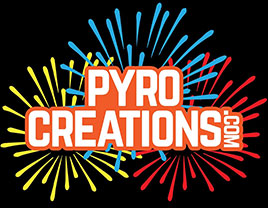


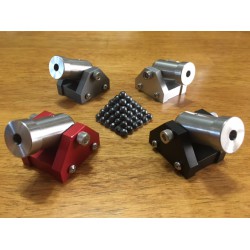


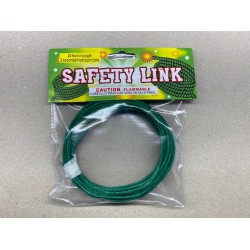
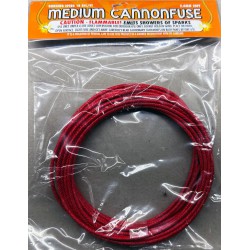

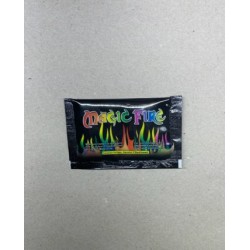
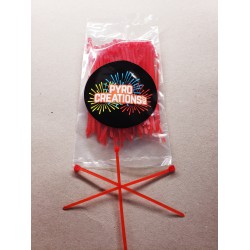
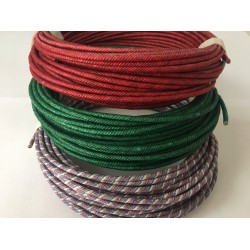
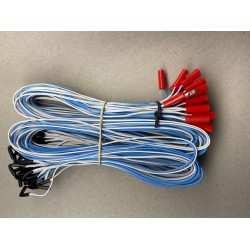
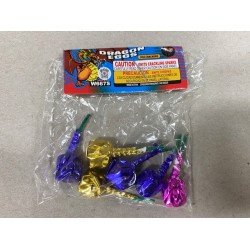

-250x250.jpg)
